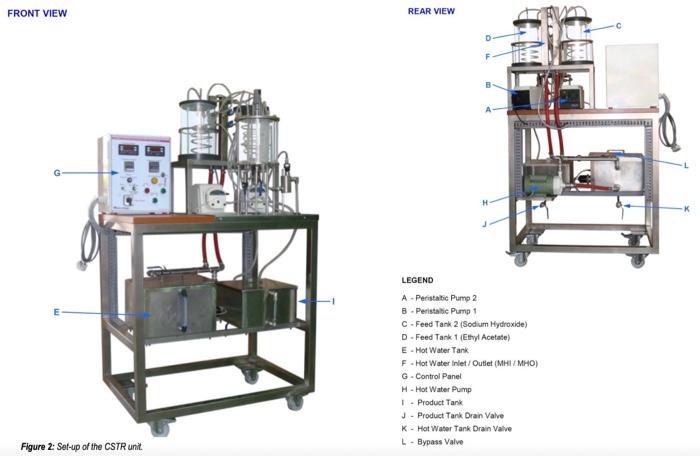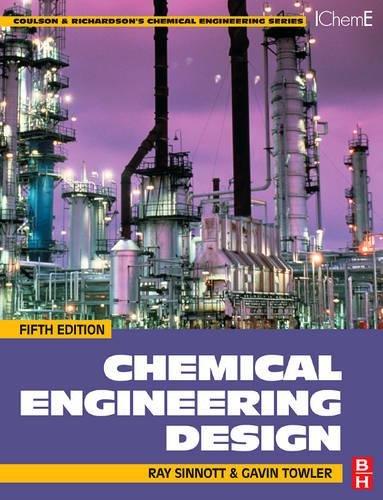Answered step by step
Verified Expert Solution
Question
1 Approved Answer
Need HELP ASAP!!! Just need Ans and Solutions for Analysis&Discussions and Open-Ending Discussion. Data has been provided below. Experiment: CSTR(continuous stirred tank reactor) Question: Data:
Need HELP ASAP!!! Just need Ans and Solutions for "Analysis&Discussions" and "Open-Ending Discussion". Data has been provided below. 


Part 3: Effect of Temperature on the Reaction in a CSTR Objectives: a) To observe and control the operation of a continuous-stirred tank reactor. b) To determine the effect of temperature on conversion and reaction rate. Brief Description of Experiment: This experiment is to be carried out with the same set up and reactants as in Part 2. In this experiment however, the flow rate is to be fixed at 30 rpm, and the experiment is to be carried out at different temperatures; room temperature (25 C), 45 C and 75 C. Similar to the previous experiment in Part 2, the conductivity values of both inside and outside (outflow) of the CSTR are to be measured using Probe 1 (reactor) and Probe 2 (outlet) and then compared. The conductivity values are to be taken with a time interval of 0.5 min (30 seconds) until the reactor reached steady state (outlet conductivity becomes constant). Analysis and Discussions: Using the generated experimental data, plot the graph of conversion vs time for each temperature. Then, calculate the k values, and the reaction rate for each temperature. Use the k values to find the activation energy and the pre-exponential factor. State your assumptions and discuss your findings. Open-Ended Discussions: If you were to improve the experimental results by changing the experimental set-up or process (or anything), what changes would you propose? Explain your idea. Time (min) ||| 0.0 0.5 1.0 1.5 2.0 2.5 3.0 3.5 4.0 4.5 5.0 5.5 6.0 6.5 7.0 7.5 8.0 9.0 co ||] | -1-NN]]]o]]]]]] 8.1 5.6 ||||||||||||||||||||| Coductivity (mS) 45 C Probe 1 Probe 2 7.2 9.7 32.3 11.2 34.3 10.2 30.2 9.1 30.4 9.3 26.5 9.2 25.2 9.9 24.1 10.3 22.8 10.1 22.4 10.3 22.4 10.6 22.2 10.1 21.4 16.0 21.0 16.7 20.6 16.3 20.3 16.4 19.8 20.3 15.8 19.9 15.7 19.6 15.7 19.6 15.7 19.6 15.8 19.5 15.7 30 C Probe 1 Probe 2 22.9 11.1 32.5 13.8 37.0 12.3 33.0 12.7 31.7 12.8 29.3 13.3 28.4 14.6 27.5 13.0 26.4 13.4 25.9 12.5 25.6 15.6 26.0 18.6 25.5 19.5 25.0 20.6 25.3 21.0 25.2 21.0 25.0 21.0 25.1 21.0 24.8 21.0 24.5 21.0 24.6 20.6 24.6 20.7 24.6 20.7 24.6 20.7 75 C Probe 1 Probe 2 10.2 8.3 322 8.6 31.7 8.1 27.5 5.5 29.2 5.8 23.8 5.1 22.1 5.2 20.8 7.6 19.3 6.8 19.0 19.3 1.6 17.4 12.5 17.1 12.8 16.0 11.6 11.2 16.7 11.8 14.6 11.0 15.9 10.6 15.4 10.4 14.7 10.8 14.7 10.7 14.7 10.7 18.5 16.1 15.5 20.8 16.0 10.0 11.0 12.0 13.0 14.0 15.0 14.8 10.7 FRONT VIEW REAR VIEW LEGEND A - Peristaltic Pump 2 B. Peristaltic Pump 1 C-Feed Tank 2 (Sodium Hydroxide) D-Feed Tank 1 (Ethyl Acetate) E - Hot Water Tank F. Hot Water Inlet / Outlet (MHIMHO) G Control Panel H- Hot Water Pump 1 Product Tank - Product Tank Drain Valve K - Hot Water Tank Drain Valve L - Bypass Valve Figure 2: Setup of the CSTR unit Experiment: CSTR(continuous stirred tank reactor)
Question:

Data:


Step by Step Solution
There are 3 Steps involved in it
Step: 1

Get Instant Access to Expert-Tailored Solutions
See step-by-step solutions with expert insights and AI powered tools for academic success
Step: 2

Step: 3

Ace Your Homework with AI
Get the answers you need in no time with our AI-driven, step-by-step assistance
Get Started


